How to Drain a Broken Washing Machine
The advent of the automatic clothes washing machine eliminated most of the manual labor involved in washing clothes. Nowadays, we just fill the washer with clothes, add detergent, and switch it on and the washer does the rest automatically.
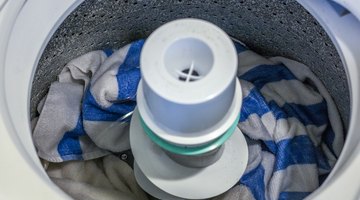
When the washer is turned on, the tub fills up with the correct amount of water. When the wash cycle is over, the clothes are rinsed with fresh water and then spun dry. Unfortunately, mechanical things eventually wear and break. In this case, the washer’s pump could quit working and leave you with a washer full of water and clothes. In order to service the washer, the water must be drained out.
Things You Will Need
- Pliers
- Bowl
- Small plastic container
- Bucket
Tip
A washing machine full of water is very heavy. If you cannot move the machine far enough from the wall to get access to the drain hose, bail the water out of the machine by hand with a small plastic container. Place the water into a bucket and empty the bucket into a drain or bathtub when it gets full. A washing machine that will not drain may have a faulty water pump. Remove the drain hose from the bottom of the washing machine with a pair of pliers and check it for clogs. Also check the lid switch to make sure it is depressing when you close the lid. If it is not depressing, the switch may be faulty.
Warning
Water and electricity do not mix. Leave your washer unplugged from the electrical outlet until the problem is resolved to reduce the risk of electrical shock. Also be sure the plug and your hands are not wet before you plug the unit back in.
-
Unplug the power to the washer. Turn the hot and cold water supply valves off by turning the handles in a clockwise direction. (The valves are usually mounted on the wall behind the washer.)
-
Use a pair of pliers and remove the flexible hot and cold water supply hoses from the back of the washing machine near the top by turning the fittings in a counter-clockwise direction. Move the washer away from the wall slightly if more room is needed to reach the supply hose fittings. (The hoses may be made of black rubber or braided flexible stainless steel.)
-
Move the washer as far away from the wall as needed to place a bowl on the floor at the rear of the machine in close proximity to the washer drain hose.
-
Lift the flexible washer drain hose from the drain pipe, which is usually attached to the wall behind your washer (Sometimes the washer drain hose is hooked over the edge of an adjacent utility sink.) and lower it to the bowl, keeping the drain hose at ground level to let gravity drain the water from the tub. Let the water drain into the bowl. Keep a close watch on the bowl and replace the hose to the drain pipe to stop the flow when the bowl is full and needs emptying. Continue this process until little or no water comes from the drain hose.
-
Remove any wet clothes from the washer tub. Use a small plastic container and bail the remaining water from the washer tub. Small amounts of water left in the tub will not matter.
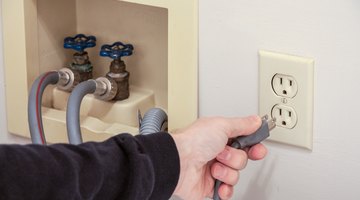
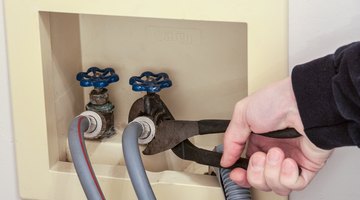
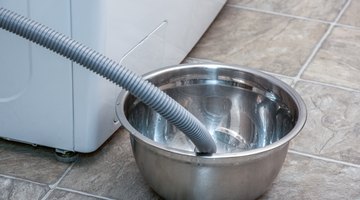
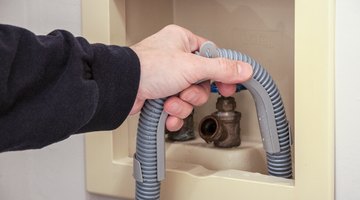

The Drip Cap
- The advent of the automatic clothes washing machine eliminated most of the manual labor involved in washing clothes.
- Unfortunately, mechanical things eventually wear and break.
- In this case, the washer’s pump could quit working and leave you with a washer full of water and clothes.
- The valves are usually mounted on the wall behind the washer.) Keep a close watch on the bowl and replace the hose to the drain pipe to stop the flow when the bowl is full and needs emptying.
References
Photo Credits
- Ryan Self/Demand Media
- Ryan Self/Demand Media
- Ryan Self/Demand Media
- Ryan Self/Demand Media
- Ryan Self/Demand Media
- Ryan Self/Demand Media
- Ryan Self/Demand Media
More Articles



